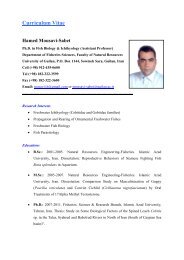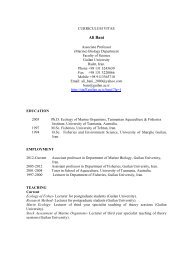Medical Tourism in Developing Countries
Medical Tourism in Developing Countries
Medical Tourism in Developing Countries
- No tags were found...
Create successful ePaper yourself
Turn your PDF publications into a flip-book with our unique Google optimized e-Paper software.
Promot<strong>in</strong>g <strong>Medical</strong> <strong>Tourism</strong> ● 137<strong>in</strong>fluenc<strong>in</strong>g domestic <strong>in</strong>centives is liberalization <strong>in</strong> India, which created aneconomic environment conducive to maximization of profits after years ofSoviet style socialist dogma and regulation. Yet another example comes fromChile, where authorities developed medical services for which patients weretravel<strong>in</strong>g to Cuba. In a form of import substitution, the rehabilitation center<strong>in</strong> Las Rejas was developed for those Chileans who traveled abroad forrehabilitation. 149The greater a country’s capacity and <strong>in</strong>centives, the grander its aspirationswith respect to medical tourism. Depend<strong>in</strong>g on how many of theadvantages a country has, its national policy might reflect a desire tobecome a regional or a global medical tourism center. India and Thailandaim to attract patients from the whole world. Their hospitals are poised tospeak the languages of the countries they want to attract (such as Arabic),and they pressure national airl<strong>in</strong>es to provide direct air service. <strong>Countries</strong>such as Chile and Jordan are quite content to be regional centers, attract<strong>in</strong>gpatients from neighbor<strong>in</strong>g countries.As medical tourism ga<strong>in</strong>s publicity, a demonstration effect is created andother develop<strong>in</strong>g countries seek to partake <strong>in</strong> the success. The countries thathave the capacity and <strong>in</strong>centives discussed above are more likely to succeed<strong>in</strong> emulat<strong>in</strong>g the medical tourism <strong>in</strong>dustry. Asian countries such asCambodia and Laos would like to supply medical services but theycannot—they don’t have the funds to <strong>in</strong>vest <strong>in</strong> hospitals, the manpower toservice them, or the <strong>in</strong>frastructure to lubricate production. This is not tosay that they, and other countries, cannot offer medical tourism, but ratherthat its nature would be different (for example, it is likely that the capital<strong>in</strong>vestments would come from abroad). Also Colombia, not to be outdoneby Chile and Argent<strong>in</strong>a, is try<strong>in</strong>g to break <strong>in</strong>to the medical tourism <strong>in</strong>dustryby us<strong>in</strong>g the bluepr<strong>in</strong>t of successful medical tourism providers (the CapitalHealth Project has been launched by the authorities <strong>in</strong> an ambitious effortto make Bogota Lat<strong>in</strong> America’s premier health-care center and to drawpatients from Ecuador, Venezuela, and Panama who otherwise would havetraveled to Miami or Cuba). Lebanon too has regional aspirations and seeksto transform itself <strong>in</strong>to “the hospital of the Middle East,” compet<strong>in</strong>g withDubai to dethrone Jordan (it has established the Lebanese Council forNational Health <strong>Tourism</strong> that has <strong>in</strong>vested US$500,000 to promote medicaltourism. 150 With<strong>in</strong> one month of its launch<strong>in</strong>g, 50 patients have comefrom the Arab countries).Unfortunately, some LDCs might want to become medical tourismdest<strong>in</strong>ations at all costs, at any price. As Henderson po<strong>in</strong>ts out, some countries“might be tempted to engage <strong>in</strong> less reputable practices that are illegalor not widely obta<strong>in</strong>able.” 151
















